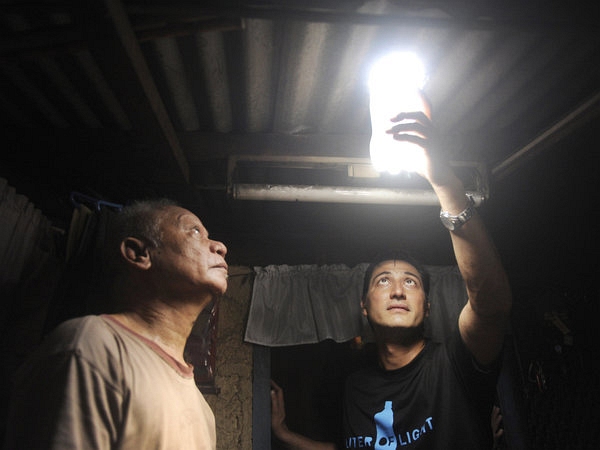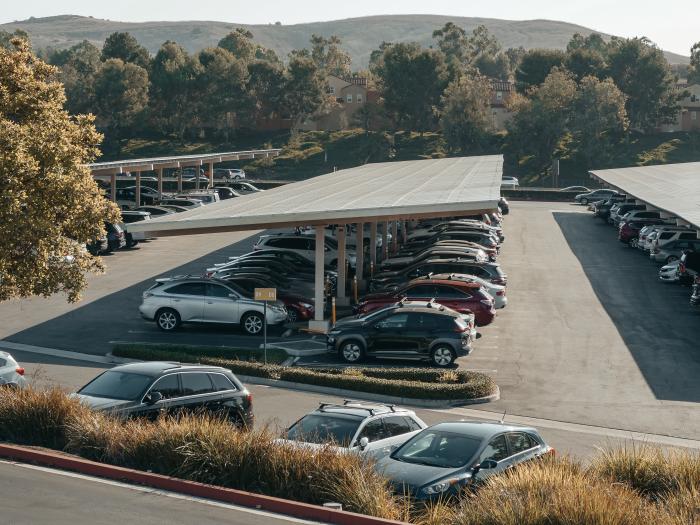Reading Assignment
- J.R. Brownson, SECS, Chapter 2 - "Context and Philosophy of Design".
Come back to review this Chapter specifically focusing on the Frameworks sections.
The last activity emphasized the way that SECS can "work" as a functional system. Now, I would like you to read and reflect on the broader concept of "design" as pattern with a purpose in society and the environment. As you are reading, look into the ways that society has established frameworks for integrating solar goods and services into local solutions (which we will expand upon as "locale"). The following points are highlighted in the text.
- Solar as Lighting Aid
- Solar Rights and Access
- Solar Power Entrepreneurs
- Solar Ecosystems Services
In this section, we are going to be looking at some of the same pictures we saw in the Learning Activity, but from a different perspective. We will call the following case studies "frameworks," and investigate the value of solar energy conversion systems in different contexts. Consider the following frameworks as interpretations of valuing the solar resource and the resulting solar goods and services by society (in economic and sustainability terms): the same resource can be applied to different client needs, the way that we have set up legal ramifications to protect access and rights to the resource, the entrepreneurial/ecopreneurial spirit that is a part of SECS design and implementation, and the ecosystems services that surround our SECSs.
Solar as Lighting Aid

NPR Audio Article (Transcript available on the website)
Many of us will come into the field of solar energy with a slightly biased view that the solar resource is useful for making electricity (a preferred solar good by many stakeholders) using photovoltaic technologies (the Solar Energy Conversion System of note in current society) or for making hot air or water (like a solar hot water panel, another SECS technology). However, we must be also aware of the use for daylighting. Daylight is as essential to human health as clean water and air. The variable intensity of daylight has been found to increase alertness within the office space (as opposed to constant light conditions with artificial lighting).
In the case of a Liter of Light (see link to NPR article, above), the ecopreneurial venture by this non-profit means using appropriate technology to deliver a high solar utility (again, meaning a preference to the set of goods and services from solar energy conversion systems) to their clients at accessible costs. The bottles are discarded 1 L plastic soda bottles, filled with water and a drop of bleach (to minimize algal growth or other microbes). The technology is the same as a "light pipe," or a fiber optic, using different indices of refraction between air, water, and plastic to create a phenomenon called total internal reflection. On boats, this type of light direction uses a centuries-old SECS technology called a deck prism.
Not only do these warm climate homes benefit from better lighting, they also avoid fuel costs for electricity (if available) and combustible fuels such as kerosene. Additionally, the solar bottle light pipes will improve indoor air quality by reducing fuel combustion inside.
Solar Rights and Access
While the solar resource from the sun is available at no cost to us, there are laws that may restrict the way we intend to use the sun for purposeful work. Designers will often call the accessible area for solar implementation the "solar envelope," but how do we maintain the legal rights to make use of or access our own solar envelope, and can we make sure that solar technologies can even be installed in our locale? Legal structures for solar energy is not a new concept. In ancient Rome and Greece, legal structures were set up in the form of easements, allocated government lands, and sometimes strict urban planning for orientation and elevation limitations on entire communities.
Solar rights define access to solar energy and hold significant economic consequences. They dictate whether a property owner can grow crops, illuminate his space without electricity, dry wet clothes, reap the health benefits of natural light, and perhaps most significantly in our modern era, operate solar collectors.
In the USA, we distinguish between solar rights and solar access.
- Solar rights give you the option to install a specific solar energy system within residential or commercial properties otherwise subject to private restrictions.
- On the other hand, solar access ensures that a structure receives sunlight across property lines without obstruction by neighboring objects, including trees.
- Examples of common private restrictions are bylaws that forbid PV on roofs, or clothing drying lines anywhere.
- Over 40 states have adopted solar access laws either in the form of a Solar Easement Provision or/and a Solar Rights Provision.
Solar Power Entrepreneurs

Entrepreneurs are generally great contributors to the commercialization of interesting and useful technology. The field of solar energy is no different. An important character in the development of SECSs is Frank Shuman, an eclectic inventor in the late 1800s. Shuman formed the Sun Power Company in 1910 and successfully harnessed solar power physics to generate steam pump power in Egypt in 1911.
New entrepreneurial ventures in solar are often also humanitarian and ecological in nature. SolarFire.org and Liter of Light are two examples.
The Prometheus 100 solar concentration systems for steam generation can be seen in the image above. Mirrors (the aperture) are focusing shortwave light onto an upper central receiver (glowing bucket), where steam is produced. The steam is running a small steam generator pictured in the lower left of the image. The supply water is pumped in from the tube seen in the upper right. The entire system plans are available as open-source information, and can be machined with accessible local technologies and inexpensive materials. This system was installed in Rajkot, India.
Solar Ecosystems Services
Any solar technology will have an impact on the ecosystem in which it is deployed. In addition, it could add ecosystems services to the area if designed with an awareness for landscape architecture and ecology. Presently, design teams discuss manners in which photovoltaic arrays can add desirable shading in addition to power generation (desirable shading would be considered a preferred solar service). One common method is to design and install a solar panel to also serve as a shading structure for cars in a parking lot.

- Supporting services or habitat
- Provisioning services
- Regulating services
- Cultural services
You may wish to read the short descriptions of the various services from The Economics of Ecosystems and Biodiversity (TEEB) website. They have created a fairly concise list with descriptive sections that clearly identify valued processes that emerge from a resilient ecosystem. Remember: our technologies and our societies are always a functioning part of our ecosystems in the locale that we operate, even if it doesn't quite seem that way in our daily lives.
